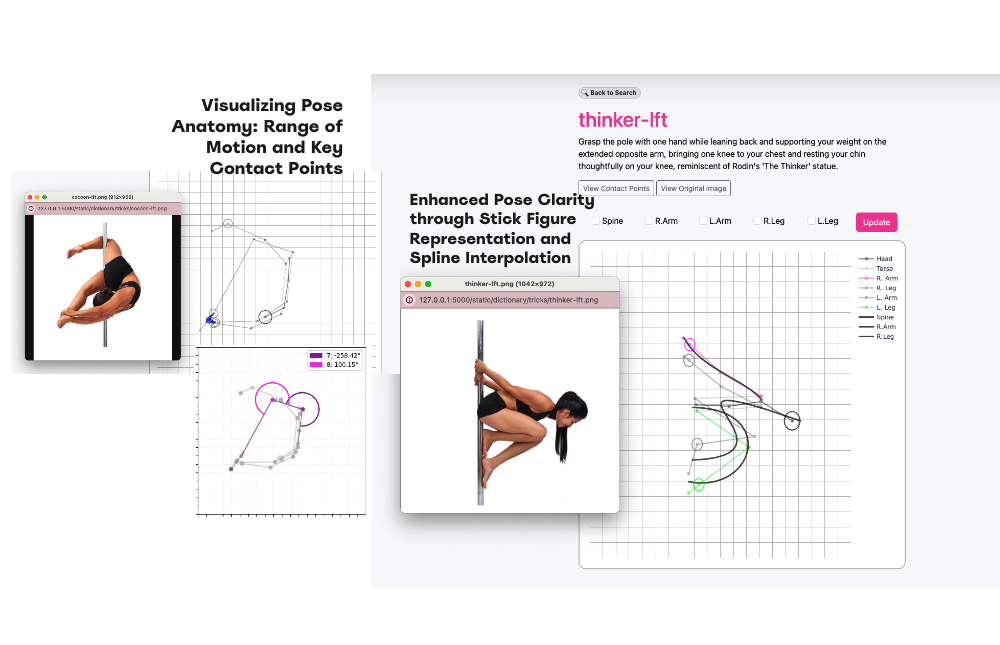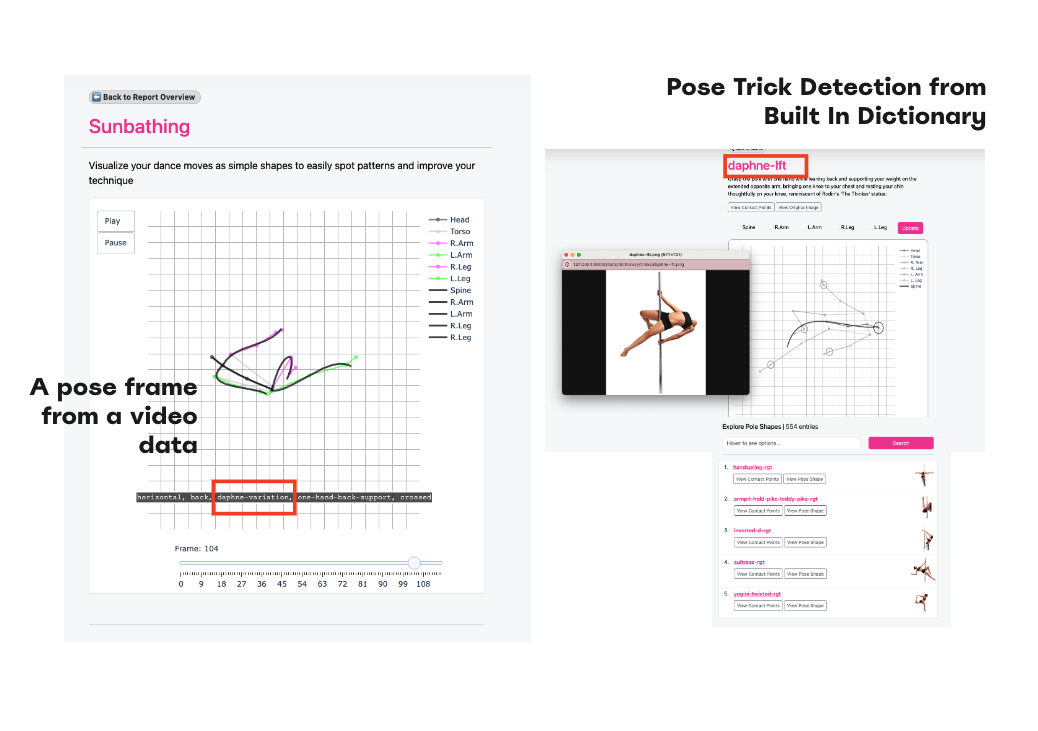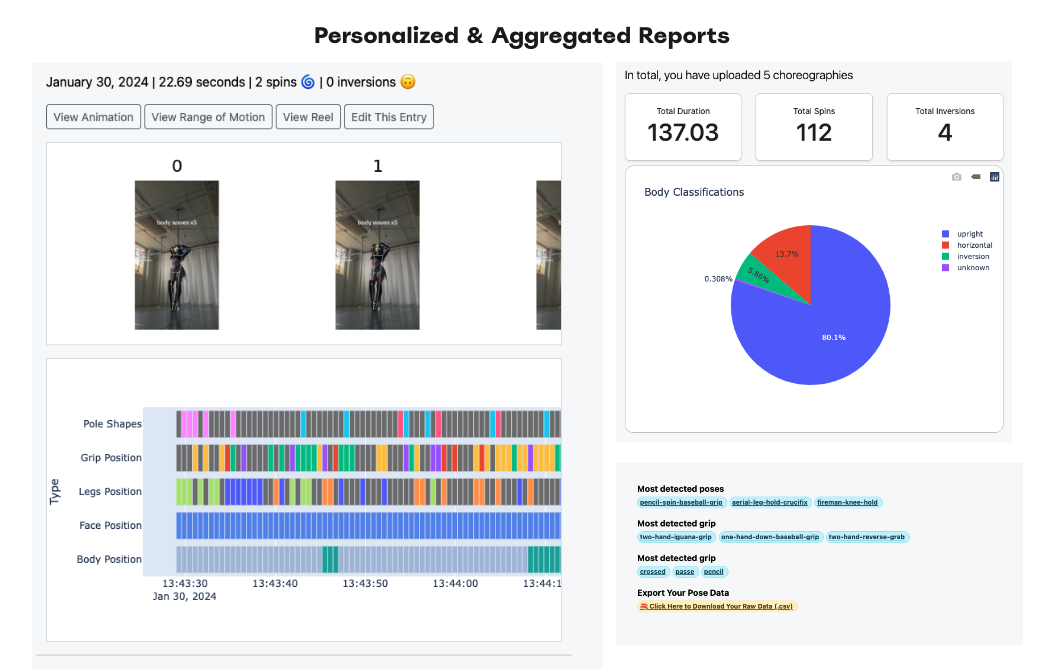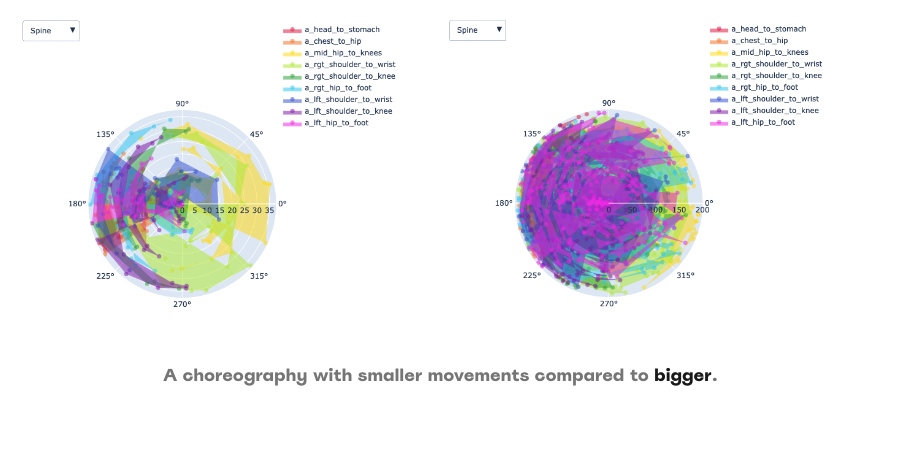Poledance.xyz is an online platform designed for managing solo choreography in the field of pole fitness. It employs a data science framework to distill complex movements into simplified terms and generate reports that systematically codify a dance. The beta version features:
- An online dictionary and visualization tools for domain-specific dance movements.
- An online diary for users to upload videos and receive personalized reports with statistics.
- Documented data processing and algorithm development steps.
Key achievements:
- Collecting and labeling images and videos for a diverse dataset.
- Integrating kinematic data to analyze poses using Mediapipe Pose Landmarker Task
- Creating plot and figure aesthetics to convey pattern and insights
- Simple error analysis from a single user to refine future development
The beta application uses a monolithic architecture with Flask, featuring modular design patterns for scalability and organized into distinct functional modules.
.
├── app
│ ├── accounts/
│ ├── api/
│ ├── diary/
│ ├── dictionary/
│ ├── extensions/
│ ├── models/
│ ├── reports/
│ ├── services/
│ ├── static/
│ ├── templates/
│ ├── utilities/
│ └── wsgi.py
├── config.py
├── docs/
├── requirements.txt
├── tests/
│ ├── integrated/
│ └── unit/
└── wgsi.py
- Matplotlib (https://matplotlib.org/)
- MediaPipe (https://github.com/google/mediapipe)
- Numpy(https://numpy.org/)
- OpenCV (https://github.com/opencv/opencv)
- Pandas (https://pandas.pydata.org/docs/index.html
- Plotly (https://plotly.com/python/)
- Scikit-learn (https://scikit-learn.org/stable/)
- Scipy (https://scipy.org/)
- Flask 3.0.x(https://flask.palletsprojects.com/en/3.0.x/)
- Bootstrap v5.3.2 (https://getbootstrap.com/)
- Kartaly, I. (2018). Pole Dance Fitness.Cardinal Publishers Group
- Nicholas, J., Weir, G., Alderson, J. A., Stubbe, J. H., van Rijn, R. M., Dimmock, J. A., Jackson, B., & Donnelly, C. J. (2022). Incidence, Mechanisms, and Characteristics of Injuries in Pole Dancers: A Prospective Cohort Study. Medical problems of performing artists, 37(3), 151–164. https://pubmed.ncbi.nlm.nih.gov/36053493/



